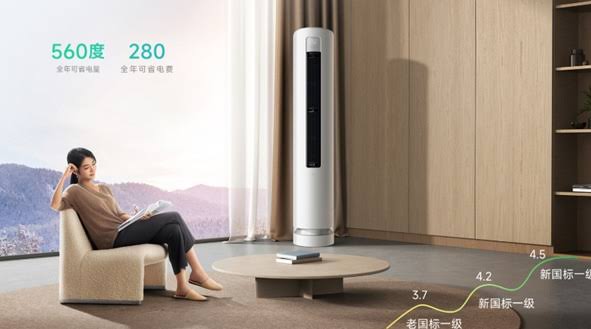
Researchers at the University of Hong Kong are conducting experiments with a new refrigeration method that dispenses with the use of environmental gases.
Technology, called elastocaloric cooling, uses metal alloys to reduce the temperature of environments and, according to developers, can reach energy efficiency up to 48% higher compared to traditional air conditioning systems.
The proposal emerges as an alternative to conventional models that use gases such as hydrofluorocarbons (HFCs), substances pointed by scientists and environmental organisms as responsible for expanding the greenhouse effect.
The new technique is still in the experimental phase, but the initial results indicate potential for large -scale application, as published by the team in the journal Nature Energy.
System does not use soda gases
The base of the new system is the so -called elastocaloric effect, observed in materials such as nickel and titanium alloys.
Discovered in the 1980s, the phenomenon involves the temperature change of certain metals when subjected to mechanical compression. When pressed, these alloys release heat. When relaxed, they absorb heat from the environment, generating the cooling effect.
According to the researchers, the developed prototype uses three distinct types of metal alloys, which allows continuous compression and decompression cycles with efficient thermal control. The process does not require the use of refrigerant fluids, which are currently standard in most air conditioning systems.
“It’s a complete change in cooling approach,” said one of the team members responsible for the project. “Metal mechanical manipulation allows to transfer heat accurately and with less energy expenditure.”
Application potential in different sectors
According to studies, elastocaloric refrigeration can be applied in various sectors of the economy.
Researchers highlight the possibility of use in residential systems, commercial buildings, industries and even electric vehicles. There are also indications that the system could be adapted to assist in the thermal regulation of battery, contributing to the performance and durability of these components.
Despite the early stage of development, laboratory tests demonstrated gains in energy efficiency and reduced electricity consumption. The prototype will still be subjected to new evaluations before the marketing process can be started.
The researchers did not establish a schedule to complete the validation steps or for the beginning of industrial production.
However, they stated that the research will continue to improve compression cycles and expand the durability of the materials used.
Environmental impact
Traditional cooling systems are pointed out by international agencies as significant sources of greenhouse gas emissions.
HFCs, although present in the atmosphere, are estimated to have global warming potential up to a thousand times larger than carbon dioxide, depending on the compound.
The new system not only eliminates the use of these gases, but also requires lower electricity consumption, according to the tests performed. As a result, the large -scale adoption of technology can contribute to reducing the environmental impact caused by air conditioning systems.
“The cooling sector is responsible for a significant portion of global energy consumption,” explained one of the research coordinators. “Technologies that reduce this consumption safely and without compromising efficiency can represent a relevant advance towards global environmental goals.”
Development steps
The article published in Nature Energy details the tests performed with different metal alloys and the mechanical cycles involved in the cooling process.
The team also describes the heat transfer mechanisms used to increase system performance and reduce thermal losses.
Researchers claim that the main current limitation is related to the mechanical resistance of materials along multiple cycles of use. The development of more durable alloys and the improvement of thermal control systems are the main focuses of the next phases of the study.
In addition, there is a need to adapt the system to different scales and contexts of use. Scientists assess that industrial and residential applications will require adjustments to the original project to enable the installation and operation integrated to existing systems.
Perspectives
Although not yet expected to enter the market, those responsible for the research consider that elastocaloric refrigeration may, in the medium term, represent a viable alternative to traditional methods. The development of public policies and incentives for low environmental impact technologies can also accelerate the adoption of this type of system.
The University of Hong Kong research is part of a set of international studies aimed at replacing HFCs and reducing energy consumption in cooling equipment.
According to scientists, recent advances indicate that solutions based on physical properties of materials, such as elastocaloric effect, have the potential to overcome technical challenges that still limit their commercial application.
The team will continue with long -term tests and performance evaluations under different conditions of use, seeking to validate the technical and economic viability of technology. The goal is to make the system compatible with the efficiency, safety and production cost requirements required by the sector.
Source: https://www.ocafezinho.com/2025/04/19/chineses-testam-sistema-de-refrigeracao-sem-gases-poluentes-que-substitui-o-ar-condicionado/

